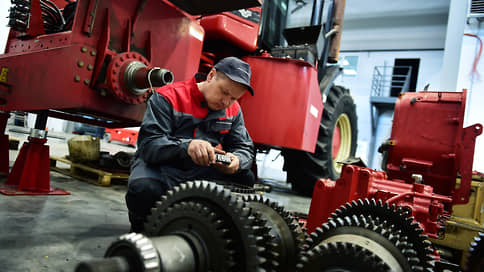Sales of Russian special equipment in 2023 increased by 15%, to 84 billion rubles
[ad_1]

Domestic machine builders increased sales of road construction equipment (DST) to 84 billion rubles in 2023. At the same time, the volume of imports, according to market participants, exceeded 440 billion rubles: after the peak of the crisis, it was actively filled with equipment from China. Experts estimate the total sales volume at 80 thousand units, and the increase at 50%. But this year, analysts and players believe, sales of special equipment will slow down due to the level of the Central Bank rate and a reduction in construction.
Sales of domestic special equipment in 2023 increased by 15%, to 84 billion rubles, as calculated by Rosspetsmash (combines data from factories that produce 80% of the total volume of DST produced in the Russian Federation). The output increased by 19%, to 90 billion rubles. Let us recall that the segment of domestic equipment showed growth at the end of 2022 (see “Kommersant” dated January 20, 2023). The production and shipments of DST were positively influenced by high volumes of construction and the implementation of infrastructure projects, the association notes.
The share of players included in Rosspetsmash on the market in monetary terms decreased in 2023, amounting to 16% versus 22% a year earlier. The association calls the problem “aggressive imports,” which in 2023, according to their estimates, grew by 58%, exceeding 440 billion rubles, “as a result, a number of key segments of the domestic DST showed negative dynamics.”
49.6 thousand pieces
constituted the road construction equipment market, according to Gazprombank Leasing, in 2022.
The entire DST market in units, according to a preliminary estimate by Gazprombank Leasing, amounted to 80 thousand units in 2023 – more than 50% more than a year earlier, Maxim Kalinkin, general director of Gazprombank Leasing, told Kommersant. Among the most popular brands, the lessor notes, are Chinese LGCE, LiuGong, XCMG, Lonking, Sany, Zoomlion, Lovol and Shantui. At the same time, medium wheel loaders, backhoe loaders, medium hydraulic excavators and mini skid steer loaders are mainly imported into the Russian Federation.
Rosspetsmash says that imports dominate in such segments as motor graders, excavators, road rollers, front loaders, and asphalt mixing plants. The share of foreign supplies of this equipment varies from 65% to 94%, they say. In the Russian Federation, traditionally, the main sales of forklifts were imported from China: due to the scale of the domestic market and large production volumes, it was difficult to compete with companies from the country even before the crisis. At the same time, UMG notes that 2023 showed explosive growth in the volume of imported equipment in the first half of the year, but in the second half a slowdown began, and at the end of the year many importers had large warehouses of equipment. In 2024, the company expects a decrease in import volumes due to an increase in the share of local producers, the high cost of money and the depreciation of the ruble.
For the further development of DST production in Russia, it is necessary to create “equal conditions for competition with foreign players,” according to Rosspetsmash. To do this, they insist on certification control, as well as on a gradual increase in recycling collection “in relation to products whose domestic producers will undertake obligations to achieve state targets.”
Dmitry Babansky from SBS Consulting believes that in 2024 the special equipment market will stabilize and the growth rate will slow down.
This will be facilitated by the slowdown in the residential real estate market, as well as the cost of financing: “The Bank of Russia reported that, subject to a steady decline in inflation and inflation expectations, it was ready to reduce the rate, but it predicted a target of 6–7% only by 2026.” The head of VTB Leasing Group of Companies Anton Musatov also notes that the demand for DST will be influenced by monetary policy: “If the key rate remains at the current level or increases, then leasing in this segment may show a slight increase (up to 5% in units and up to 10–15% for new business).” With monetary policy easing, demand could be higher, he adds.
The driver of the market can be infrastructure projects, notes Mr. Babansky. “Programs for the development of national projects and subsidies, the construction of infrastructure facilities and federal highways will stimulate demand for equipment in 2024,” agrees Maxim Kalinkin.
Sales Director of LC Europlan Ivan Korovnikov adds: in the DST segment there is a continuous increase in the number of issues annually, and in 2023 the increase was 13%. “We expect that this trend will not change in 2024, since the factors influencing the DST market have not changed,” he says, pointing to the state program “Construction”, as well as the availability of preferential leasing of special equipment.
[ad_2]
Source link





